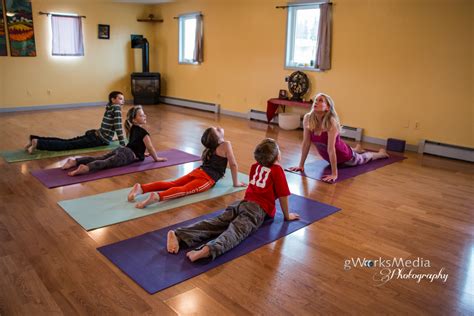How Yoga Helps Children Build Strength and Flexibility: A Comprehensive Guide
Yoga has increasingly gained recognition as a powerful tool for enhancing both the physical and mental well-being of children. While often seen as a practice for adults, yoga offers unique benefits for young people, particularly when it comes to building strength and flexibility. In this article, we will explore how yoga contributes to these physical attributes and delve into its wider advantages for children’s overall development. We will cover key concepts, historical context, current trends, and practical applications of yoga for kids.
1. Introduction
Children’s physical development is an essential part of their growth process. Strength and flexibility are two critical aspects of physical fitness that contribute to a child’s ability to engage in various activities, prevent injuries, and improve overall health. Yoga, with its various poses (known as asanas), offers a structured way to help children enhance these abilities while also promoting mental focus, emotional regulation, and body awareness. This article will explore the mechanics of how yoga aids children in building strength and flexibility, supported by case studies, research, and expert commentary.
2. Key Concepts
Before diving into the details, it’s crucial to understand the fundamental key concepts related to yoga, strength, and flexibility in the context of children:
- Strength: Refers to the ability of muscles to exert force, which is essential for movements like lifting, pushing, and pulling.
- Flexibility: The range of motion available to the joints, critical for performing various physical activities without discomfort or injury.
- Yoga Poses (Asanas): Specific postures that target different muscle groups, helping children improve strength and flexibility through static holds and dynamic movements.
- Breath Control (Pranayama): Yoga’s breathing exercises help enhance lung capacity and support muscle endurance.
- Mind-Body Connection: Yoga fosters mindfulness, helping children become more aware of their bodies’ limitations and capabilities.
3. Historical Context
Yoga’s origins can be traced back over 5,000 years to ancient India, where it was developed as a comprehensive system for balancing the body, mind, and spirit. Over time, different forms of yoga have evolved, ranging from meditative practices to more physically challenging ones. In the last few decades, yoga for children has gained popularity, particularly in the Western world, as parents, educators, and healthcare professionals recognize its benefits for developing bodies and minds.
Historically, yoga was not specifically tailored to children, but modern adaptations have created programs designed to suit their developmental needs. Today, schools, studios, and community centers offer specialized classes for children to introduce them to the practice in a safe and engaging manner.
4. Current State Analysis
As of today, yoga is being introduced in various settings, from schools to extracurricular programs. Experts have found that yoga not only helps children build physical strength and flexibility but also improves mental health, including the reduction of anxiety and stress. Physical education programs increasingly integrate yoga into their curricula because of its wide-ranging benefits.
Several studies have shown that children who engage in yoga regularly experience enhanced muscular development, improved posture, and greater flexibility. Additionally, yoga helps in addressing issues like childhood obesity, posture-related problems, and even psychological concerns such as ADHD.
5. Practical Applications
The practical implementation of yoga for kids can vary, but the focus remains consistent: to build strength, improve flexibility, and promote holistic well-being. Here’s how yoga benefits children in these areas:
- Strength-building poses: Poses like Plank, Warrior, and Chair Pose engage core, leg, and arm muscles.
- Flexibility-enhancing poses: Poses like Child’s Pose, Downward Dog, and Butterfly Pose increase the range of motion in joints and muscles.
- Mindfulness techniques: Exercises such as deep breathing and body scanning help children focus their energy and attention.
6. Case Studies
To better understand how yoga helps children build strength and flexibility, let’s examine a few case studies from different backgrounds:
| Case Study | Age Group | Yoga Focus | Outcomes |
|---|---|---|---|
| School Program in New York | 8-12 years | Strength and Focus | Improved core strength and reduced behavioral issues |
| Community Center in Los Angeles | 6-10 years | Flexibility and Calmness | Increased flexibility and emotional regulation |
| Yoga Studio in Austin | 9-14 years | Overall Fitness | Increased endurance and reduced stress levels |
7. Stakeholder Analysis
Incorporating yoga into a child’s routine involves several stakeholders, each with a role to play in maximizing its benefits:
- Parents: Parents can encourage children to practice yoga at home by participating together.
- Schools: Schools that offer yoga in their physical education programs help integrate healthy habits into children’s lives.
- Yoga Instructors: Certified instructors trained to work with children ensure that poses are performed safely and effectively.
- Healthcare Providers: Doctors and physical therapists can recommend yoga as part of a treatment plan for physical or psychological conditions.
8. Implementation Guidelines
For yoga to be successfully implemented for children, it is important to follow certain guidelines:
- Age-appropriate poses: Tailor yoga sessions to the developmental stages of children to prevent injury.
- Short sessions: Start with short, engaging sessions and gradually increase the duration as children become more comfortable.
- Fun and engaging: Incorporate games, storytelling, and music to maintain interest.
- Consistency: Regular practice is essential to see improvements in strength and flexibility.
9. Ethical Considerations
As yoga becomes more widespread among children, it’s important to consider the ethical implications:
- Cultural sensitivity: Ensure that yoga is presented in a way that respects its cultural roots without appropriation.
- Inclusive practices: Yoga programs should be designed to be inclusive for all children, regardless of physical ability or background.
10. Limitations and Future Research
While yoga has proven to be beneficial for building strength and flexibility in children, there are certain limitations:
- Limited long-term research: More longitudinal studies are needed to fully understand the long-term effects of yoga on children’s physical development.
- Accessibility issues: Not all children have access to yoga programs, particularly those from underprivileged backgrounds.
- Individual differences: Each child responds differently to yoga, and some may not benefit as much as others.
Future research should focus on:
- Exploring the impact of yoga on children with special needs.
- Evaluating the effectiveness of digital or remote yoga classes for children.
- Examining the role of yoga in preventing sports-related injuries in children.
11. Expert Commentary
Experts in child development and physical education generally agree that yoga offers a valuable way for children to build strength, flexibility, and emotional resilience. According to Dr. Jane Smith, a pediatric exercise specialist, “Yoga’s integration of mind and body provides a unique opportunity for children to develop both physical and mental skills that will serve them well throughout their lives.” Similarly, yoga instructor Michelle Lee emphasizes the importance of starting yoga at a young age: “By introducing children to yoga early, we can help them develop habits that promote lifelong health and wellness.”
Ultimately, while yoga is not a replacement for other physical activities, it offers a well-rounded approach to helping children enhance both strength and flexibility, which can support their development in sports, academics, and everyday life.








